The AMD Radeon R9 Nano Review: The Power of Size
by Ryan Smith on September 10, 2015 8:00 AM ESTOverclocking
Finally, no review of a high-end video card would be complete without a look at overclocking performance.
Of all of the Fiji cards overclocking the R9 Nano is perhaps the easiest and certainly the most unusual. Due to the fact that the card is essentially a 1000MHz Fiji card with a heavy power throttle, the card is already validated for clockspeeds that under load it doesn’t have the available power to reach. As a result while one can crank up the clockspeeds, the card isn’t going to move until you increase the power limit. And even then you are more likely to hit the power cap again than you are to break 1000MHz sustained. So overclocking the GPU is something of an academic affair.
| Radeon R9 Fury/Nano Series Overclocking | |||||
| Ref. R9 Fury X | ASUS R9 Fury | Ref. R9 Nano | |||
| Boost Clock | 1125MHz | 1075MHz | 1075MHz | ||
| Memory Clock | 1Gbps (500MHz DDR) | 1.1Gbps (550MHz DDR) | 1.1Gbps (550MHz DDR) | ||
| Power Limit | 100% | 115% | 135% | ||
| Max Voltage | 1.212v | 1.169v | 1.2v | ||
Overall we were able to overclock our sample to 1075MHz on the GPU and 550MHz (1.1Gbps) on the memory. However load clockspeeds were almost always under 1000MHz even with a generous 35% increase in the power target. Overdrive does allow for a larger increase – up to 50% – but with the R9 Nano featuring a less robust power delivery system designed to push less power than R9 Fury or R9 Fury X, we’re hesitant to increase the limit further without a better idea of what the card can safely sustain for extended periods of time.
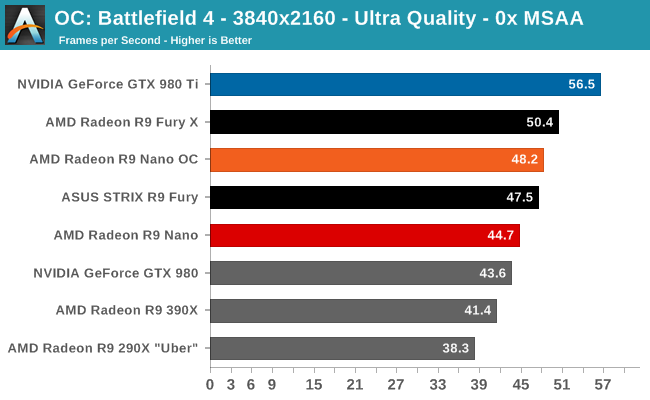

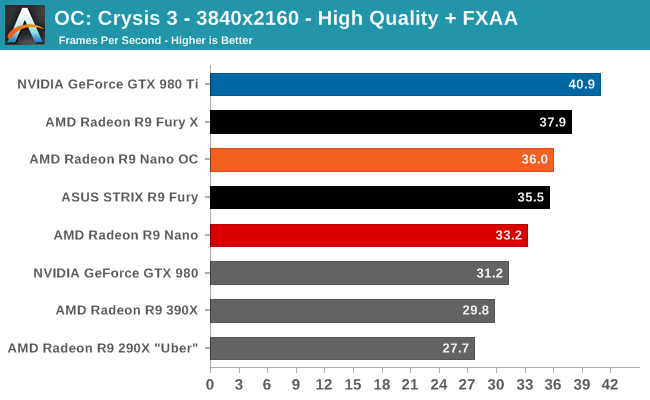
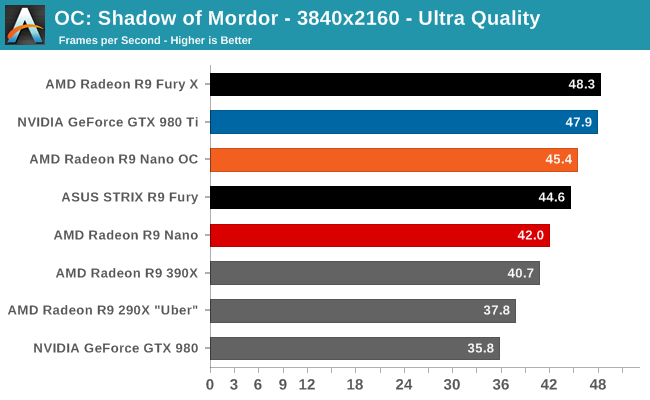
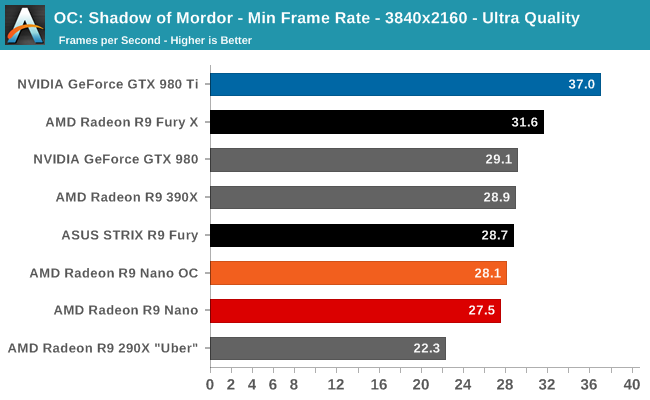
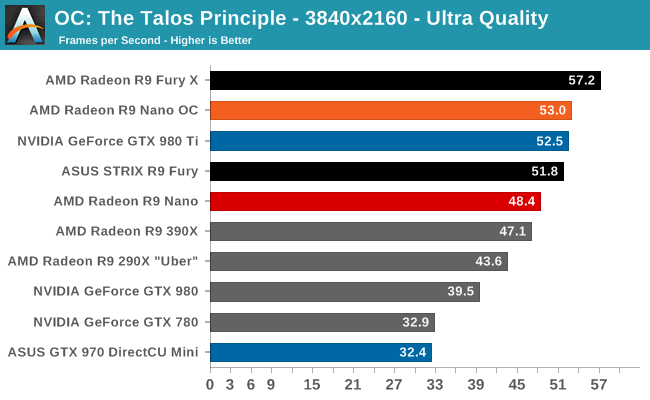
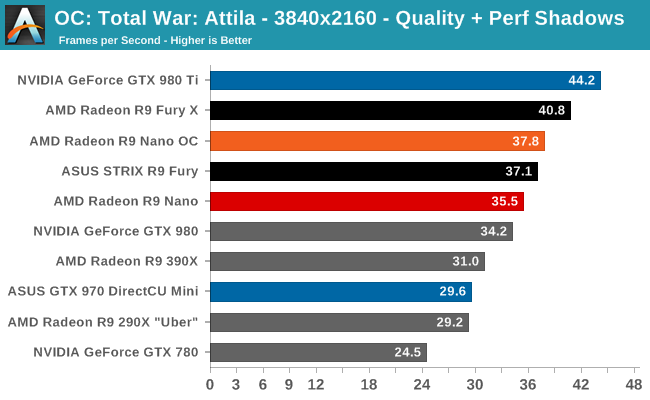
The overall performance gains from overclocking aren’t huge, but at 7-10% they also aren’t too shabby. However since higher clockspeeds quickly ramp up the power requirements due to the higher voltages required, the performance gains won’t be anywhere near the 35% increase in the power limit, despite that we are in fact still power limited.
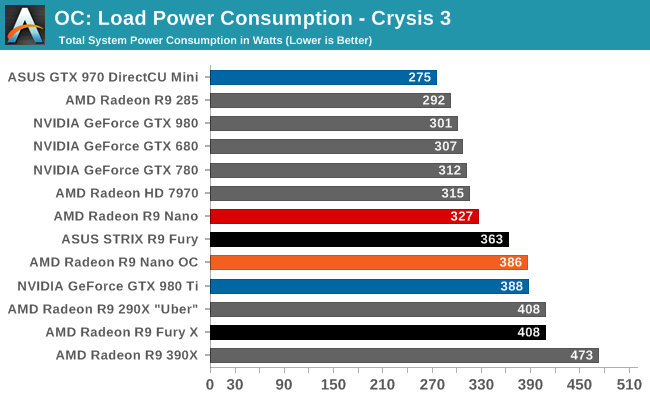
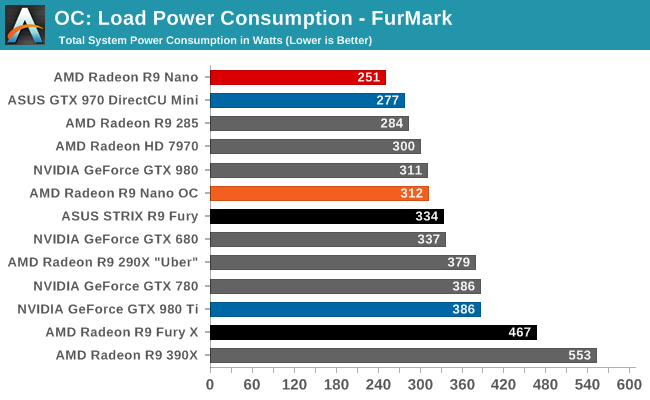
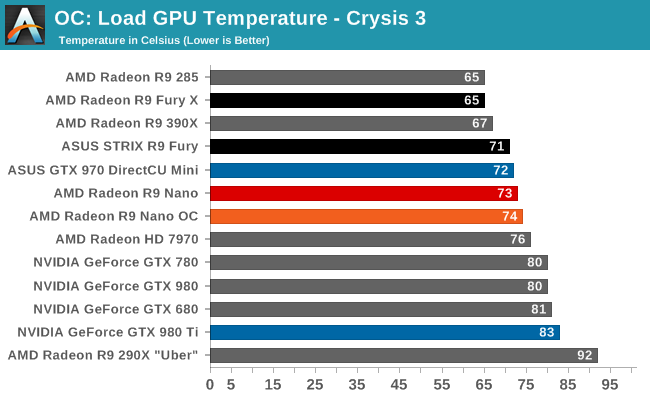
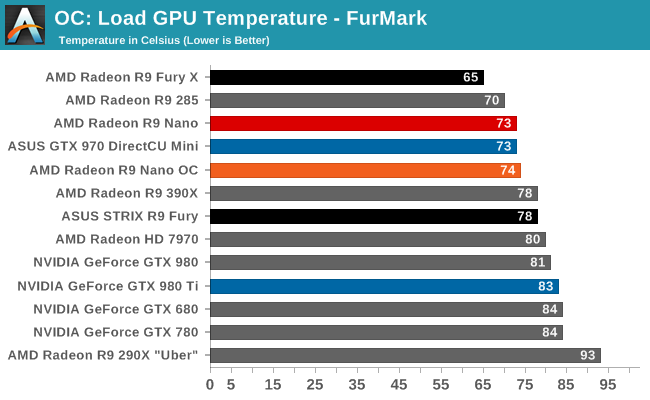
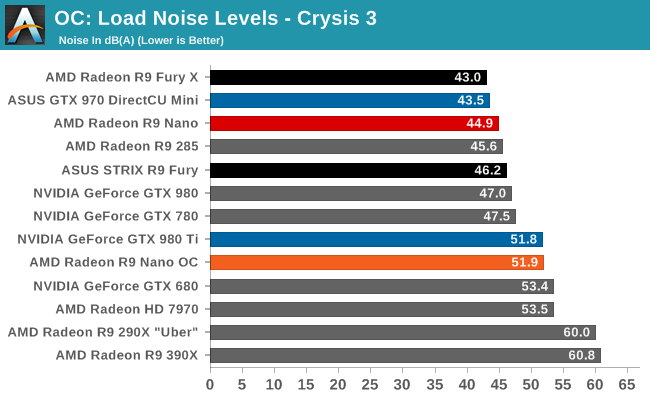
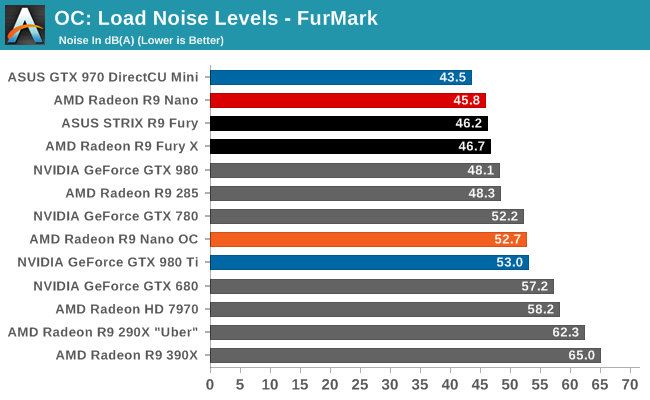
Meanwhile the 35% increase in the power limit has a definite knock-on effect on the cooling system. The R9 Nano’s cooler is able to keep up with the additional load, holding temperatures to 74C, but noise levels are now over 51dB(A). Power consumption at the wall is similarly affected, with the R9 Nano essentially giving up all of its energy efficiency gains in the process.










284 Comments
View All Comments
Qwertilot - Thursday, September 10, 2015 - link
Also Intel's 35w quad cores seem to be getting rather fast nowadays, so overall system power/a very quiet CPU cooler is much easier to handle. Not many really tiny cases mind.Also maybe a question of if you want to go one fan for something with this much power draw - it can be tamed to very, very quiet by 2 fan designs.
mosu - Thursday, September 10, 2015 - link
I wonder how Nvidia will manage HBM2 with no previous experience with HBM. Maybe TSMC will borrow some for them...nathanddrews - Friday, September 11, 2015 - link
Probably just fine seeing as they have been designing Pascal for a few years and they just began sampling a few months ago, meaning they likely have working chips in their labs right now. AMD managed fine with their first implementation. Intel seems to be doing well with their version of stacked memory. Samsung and Toshiba are also doing fine. No one would be bringing it to the consumer market if they didn't already have a good handle on it.Michael Bay - Thursday, September 10, 2015 - link
I will be an asshole and remind everybody that there is _still_ no 960 review.MrSpadge - Thursday, September 10, 2015 - link
What exactly would you expect from an AT review now that can not already be found elsewhere? I know they said a review would be coming, but seriously.. let them focus on important topics.bill.rookard - Thursday, September 10, 2015 - link
You are absolutely right. On both points.Mikemk - Thursday, September 10, 2015 - link
Really?extide - Thursday, September 10, 2015 - link
They SAID that there will not be a 960 review.Oxford Guy - Thursday, September 10, 2015 - link
Because the 960 was a poor product that made Nvidia look bad?D. Lister - Wednesday, September 16, 2015 - link
No, because AT was understaffed and they kept delaying it, until they realised that they were so late (compared to other sites) that the meager hits their review would get, wouldn't be worth the effort that they would have to put in.As for your inability to find a review, allow me to assist:
https://www.google.com/search?q=960+review&rlz...